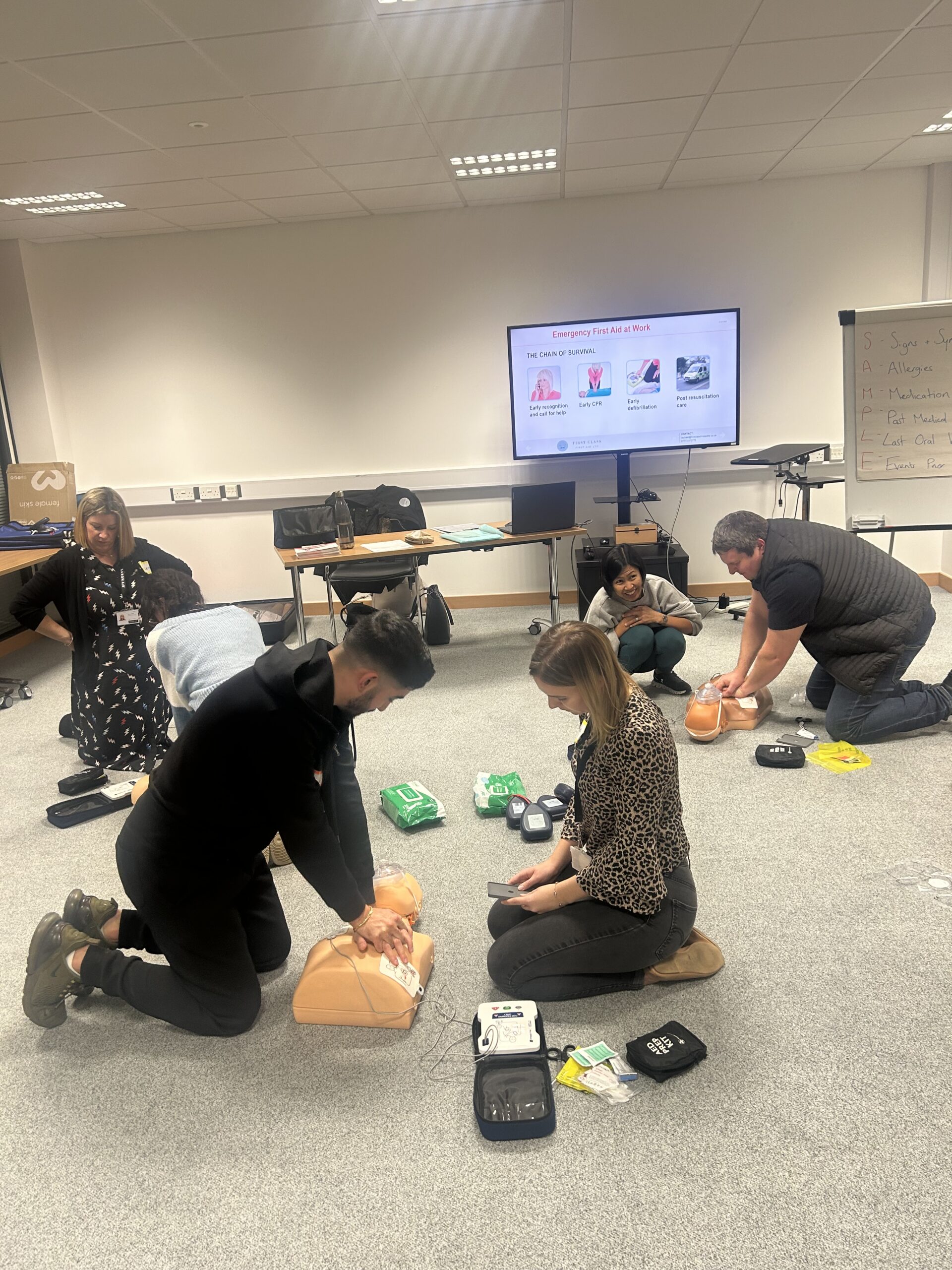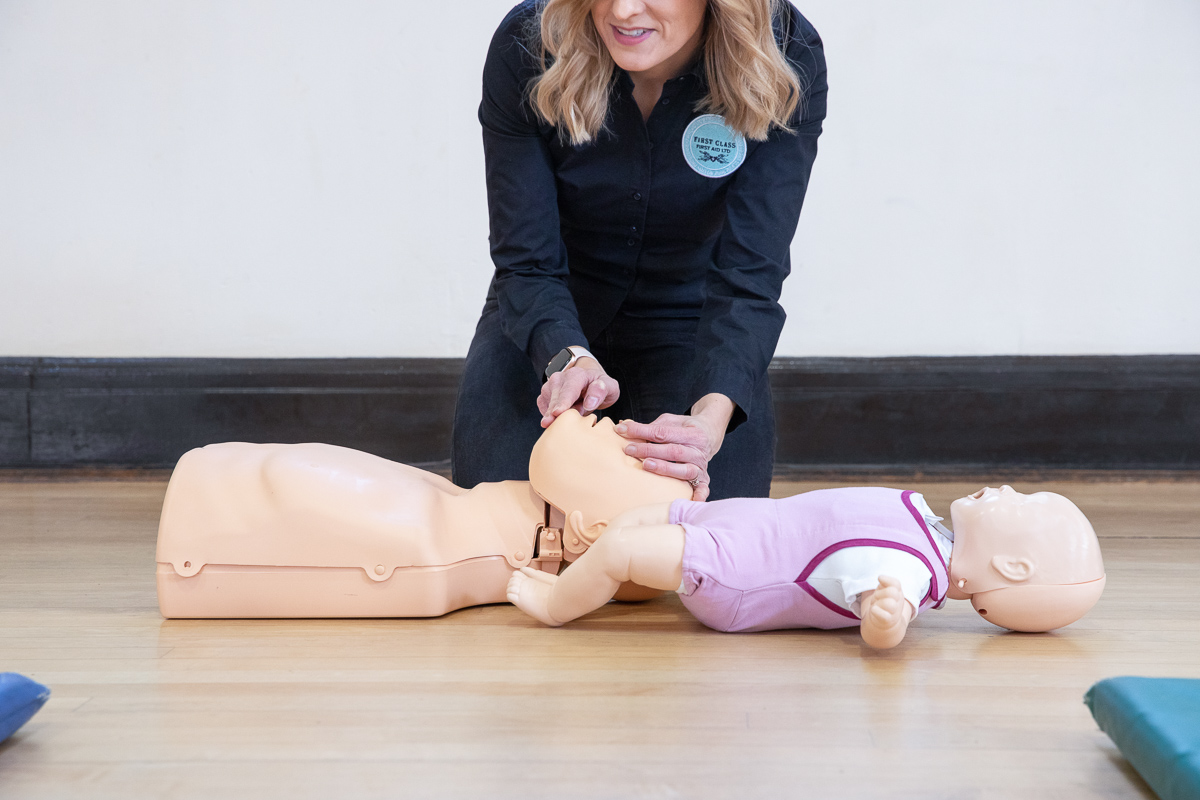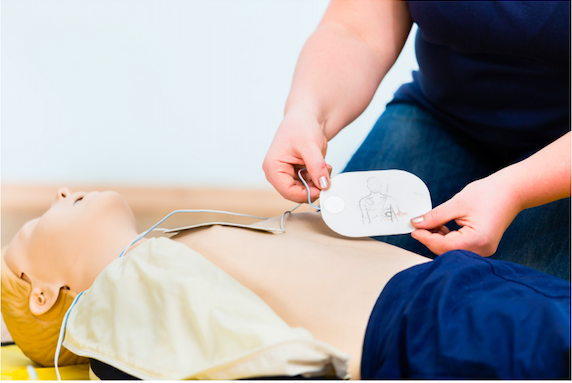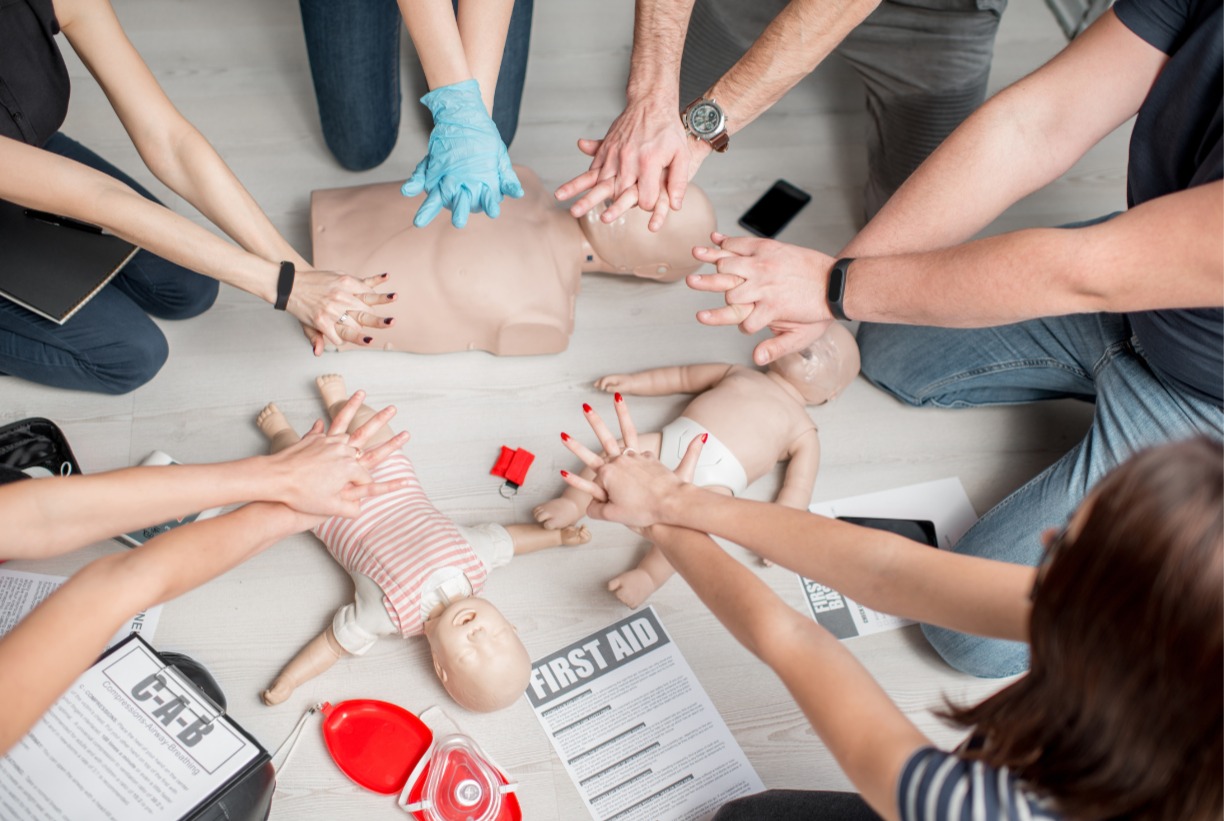At First Class First Aid we’re committed to empowering our learners with life-saving skills, and instilling the confidence it takes to step forward in a first aid emergency. The subject that the majority of students consider the most important is Cardiopulmonary Resuscitation (CPR), which is not surprising as this crucial technique can make a world of difference in a cardiac arrest emergency.
Why is CPR so important?
1. Around 30,000 out-of-hospital cardiac arrests occur in the UK every year. That’s roughly one cardiac arrest every 18 minutes, making CPR knowledge crucial for everyone.
2. The survival rate for out-of-hospital cardiac arrests in the UK is relatively low, with only about 1 in 10 people surviving. However, when CPR is started early, the chances of survival can double or even triple.
3. Surprisingly, studies have shown that people are often afraid to perform CPR, either because they lack training or fear doing it wrong. But rest assured, any attempt at CPR is better than none at all.
What is CPR?
Cardiopulmonary Resuscitation, commonly known as CPR, is an emergency procedure that helps maintain blood flow and oxygenation to vital organs during cardiac arrest (when someone’s heart suddenly stops beating effectively). By performing CPR, you’re buying time for professional medical assistance to arrive, increasing the chances of the person’s survival.
Step-by-Step Guide to Performing CPR

1. Danger: Before proceeding, ensure the scene is safe for both you and the casualty. Check for any potential hazards and ensure there is no danger in the vicinity.
2. Response: Gently tap the victim on the shoulders and shout loudly, ‘Are you okay? Can you hear me?’ Using their name if you know it.
3. Call for Help: If you’re alone call for help, a bystander can assist with calling the emergency services if necessary, retrieving equipment and consoling loved ones if present.
4. Airway: Gently tilt the victim’s head back and lift their chin to open their airway.
5. Breathing: Look, listen, and feel for signs of breathing for no more than 10 seconds. If the casualty is not breathing normally, begin CPR and ensure a bystander has called the emergency services. If you’re alone and need to call the emergency services yourself, place your phone next to the casualty and use your speaker phone to call the emergency services while you begin CPR.
5. CPR: Kneel beside the victim, interlock your hands, and position them on the centre of the person’s chest. Deliver compressions 5-6cms deep (a third of the depth of the casualty), pushing hard and fast (about 100-120 compressions per minute).
6. Give Rescue Breaths: If you’re trained and comfortable, deliver rescue breaths after 30 compressions. Give two breaths, each lasting about one second. Ensure the chest rises with each breath. If you cannot deliver breaths, carry out continuous compressions.
7. Continue CPR: Alternate between 30 chest compressions and two rescue breaths until professional help arrives.
If you have access to an AED (Automatic External Defibrillator), send your bystander to retrieve it, switch it on and follow the instructions. The emergency services will inform you if there is one nearby and issue a code for it’s release.
CPR for Children and Infants

If the casualty is below 18 years of age, you will need to give five rescue breaths before commencing CPR. For an infant (below one year) cover their nose and mouth with your mouth and give five small puffs of air, as though you were blowing out a birthday cake candle. Follow with 30 compressions but using only two fingers, in the centre of the chest. Push down by a third at a rate of 100-120 compressions per minute. Continue CPR using the ratio of 30 compressions, two breaths. For a child aged 1-18 years, begin with five rescue breaths, this time using your full out breath. If the child is above one year but below eight years old, you should use one hand to deliver compressions. Again, push down on the centre of the chest to a depth of a third and continue at a rate of 30 compressions, two breaths. The five rescue breaths should also be given if we are carrying out CPR on a casualty of any age, that has suffered a cardiac arrest due to a lack of oxygen (drowning for example).
Learning CPR is an invaluable skill that can save lives in critical situations. Every second counts during a cardiac arrest, and your quick and confident response can be the difference between life and death. Hands on training is the best way to ensure you are confident in delivering effective CPR, so if you’d like more information on our training courses, we’d love to hear from you.





